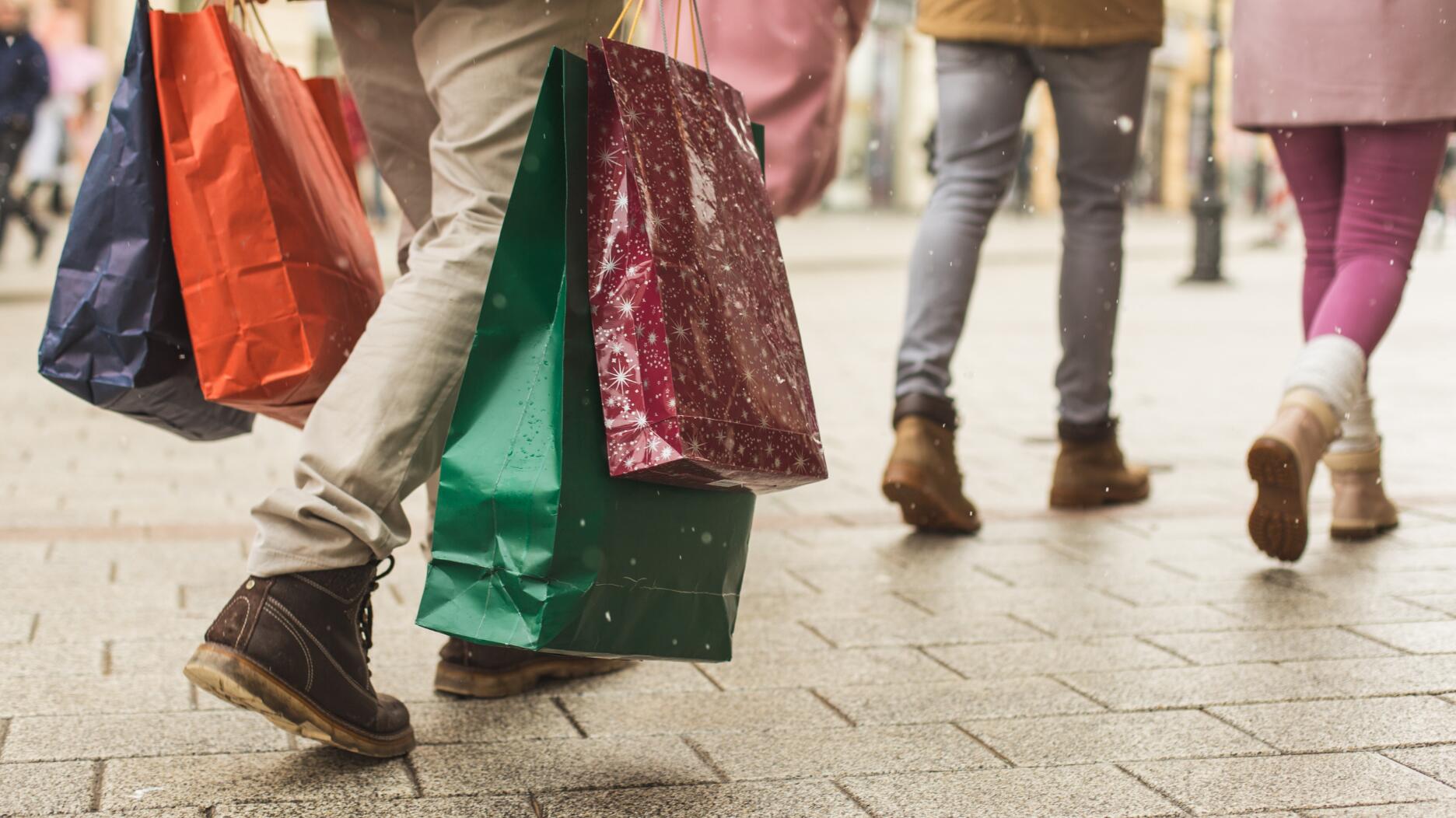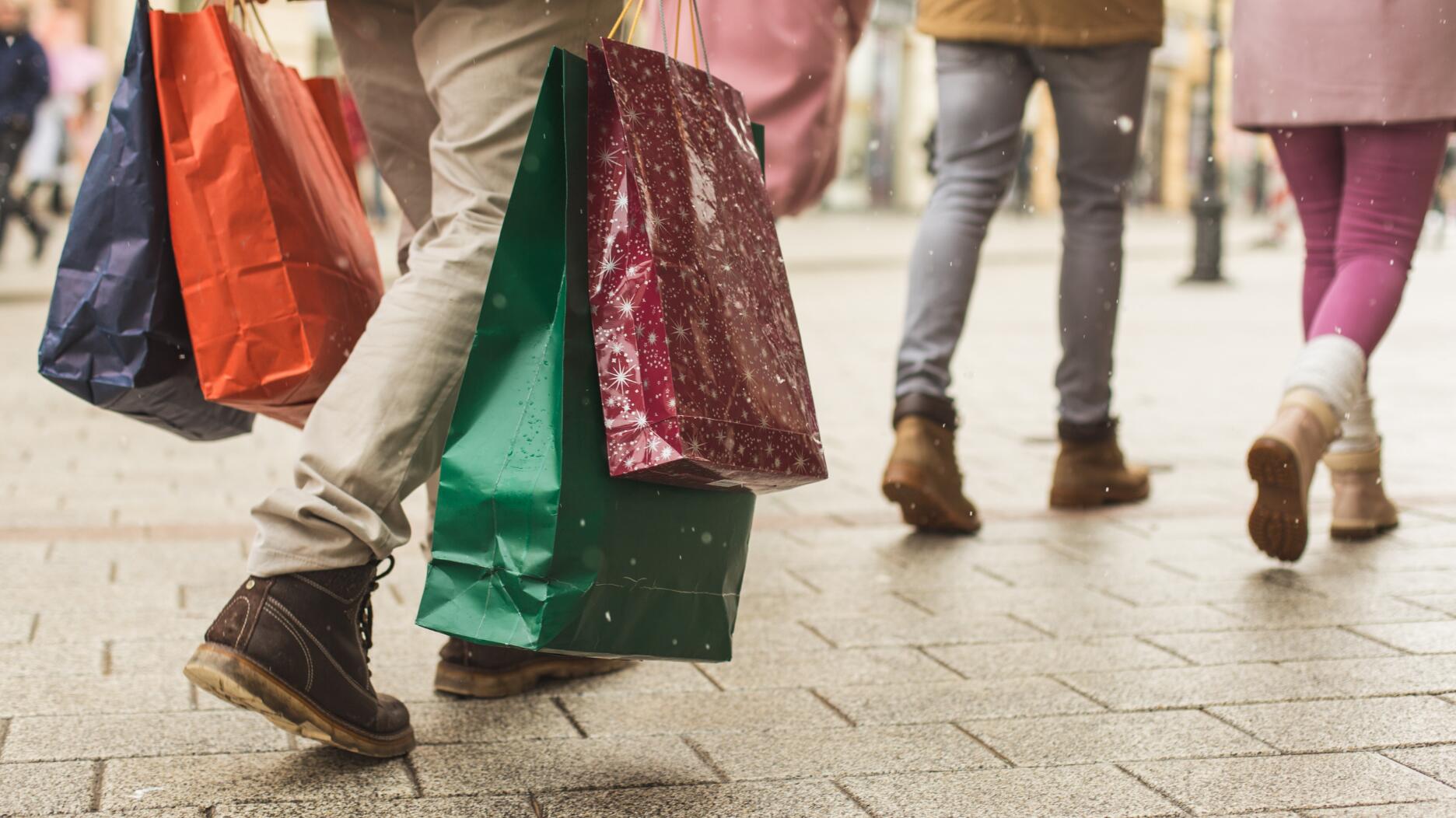The couple pleaded guilty to concealing at least $127 million in cash transactions at its precious metals businesses.
5 Ways Consumers Have Changed Since COVID-19
From frugal spending to a focus on wellness, a new report looks at how consumer behavior has evolved since the start of the pandemic.

A new report from The Conference Board takes a look at what has changed about consumer behavior since the start of the pandemic.
Titled “Consumer Behaviors and Business Opportunities in the COVID-19 Era,” the report highlights a shift toward frugality, a surge in spending on wellness products, and other insights into evolving consumer behavior.
Here are five important takeaways.
More shoppers are cutting back on spending.
As COVID-19 sent shockwaves through the economy, many consumers became increasingly frugal and switched up their spending habits.
At the height of the pandemic, 64 percent of U.S. consumers said they actively cut back on spending, according to The Conference Board Global Consumer Confidence Survey.
That frugality may be here to stay, said the report, particularly if job recovery stays sluggish and financial support from the government dries up.
The pandemic-related job losses disproportionately affected Black and Latino employees as well as those in lower-paying jobs or with a lower level of education.
In January 2021, more than 40 percent of consumers in each of these demographics said they were having difficulty meeting regular household expenses, according to the report.
“As in previous downturns, this change in spending patterns may be slow to reverse, with many likely to stick to cheaper products and sales channels over name brands even after their finances recover,” said the report.
It added companies who can cater to an increasingly frugal customer, through offerings like secondhand markets or rental services, will be rewarded.
The pandemic is weighing on consumers’ mental health.
The economic toll the pandemic has taken is clear, but the emotional cost has been just as hefty.
The U.S. Census Bureau’s Household Pulse Survey, a biweekly survey that tracks people’s economic situation, food and housing security, and their mental state, found that more Americans have been experiencing feelings of anxiety and depression since the pandemic began.
The survey asks how often people feel “nervous, anxious, or on edge,” how often they feel unable “to stop or control worrying,” how often they have “little interest or pleasure in doing things,” and how often they are “feeling down, depressed, or hopeless.”
As the pandemic continued, fewer people said they were free of these symptoms, with reports of feelings of anxiety and depression at their highest in late April into early May.
Google searches for terms like anxiety, panic attacks, and treatments, particularly remote and self-care techniques, greatly increased after the start of the pandemic, according to a World Economic Forum report on Google Trends data.
An author of the WEF’s report called the situation “a mental health tsunami” that stems from burnout, unemployment, and COVID-19-related deaths, and said experts foresee a decline in society’s mental health.
Wellness spending is surging.
As one trend lends itself to another, the decline in mental well-being has led to an increase in spending on wellness.
The report noted consumers have been spending more on self-care products and listed a variety of reasons behind the uptick, including mental stress and a desire to protect themselves from the virus.
Another notable factor is people have more time on their hands due to job loss, not having to commute due to remote work, and the lack of activities available.
As a result of this wellness focus, certain categories have felt a boost in sales, including fresh produce, natural products, sports equipment, and anti-anxiety products and services, like aromatherapy and meditation.
Digital services that center around health and fitness have also seen user counts surge as they flock to online workout videos, personal training apps, and more.
Virtual mental health services as well as other telehealth solutions also gained popularity.
Consumers are prioritizing digital convenience.
Online shopping is nothing new, but the pandemic has led to an increasing number of consumers making use of those services.
E-commerce sales surged during the pandemic, topping off at more than 16 percent of total retail sales in Q2 2020.
This figure, which measures where a purchase took place, “dramatically understates digital’s true influence,” said the report.
“Consumers now expect digital convenience at every stage of the shopping experience, even if the final sale occurs in a brick-and-mortar outlet.”
Shoppers are getting accustomed to the digital features that save them time and effort, including high-quality filtering, search, real-time information, and responsive support.
Physical stores are still crucial, added the report, noting the “immensely important” role they play in discovery and brand immersion as well as social interaction and community events.
“If anything, the collapse of revenue for many businesses due to the closure of brick-and-mortar stores and other offline service points (including those with online capabilities) has demonstrated that physical locations are essential.”
However, the report adds businesses may need to alter the functions and features of physical stores to better complement their online business.
Businesses may consider adding a pick-up section for online orders or adding QR codes to shelves to provide additional information about a product online.
Retailers should pay attention to mobile.
Mobile devices continue to take on a bigger role in the shopping experience.
Cellphones are expected to “play an integral part in further advancing digitalization and omnichannel operations.”
As 5G networks—the newest and fifth generation of the technology behind cellular networks—rollout throughout the country, mobile’s reach will expand along with it, said the report.
As shoppers look to keep their distance from each other, touchless interactions, like contactless payments or virtual try-ons, are increasingly important.
“As 5G networks proliferate, the centrality of mobile will only become more entrenched, and must shape all business decisions in the post-pandemic economy,” said the report.
For more information or to read the report, visit the Conference Board’s website.
The Latest

In February 2026, the auction house will move its headquarters to the former Steinway Hall, a neoclassical landmark on Billionaires’ Row.

The new show will take place Jan. 23-25, 2026.

How Jewelers of America’s 20 Under 40 are leading to ensure a brighter future for the jewelry industry.

The former BHP Billiton leader and Gemfields chairman is remembered for his influential leadership throughout his 50-year mining career.


The LVMH-owned brand has partnered with the costume design union to revamp its award for 2026.

The luxury titan inked a deal to acquire an initial minority stake in the jewelry manufacturer with a pathway to full ownership by 2032.

Roseco’s 704-page catalog showcases new lab-grown diamonds, findings, tools & more—available in print or interactive digital editions.

The company’s curation of unsigned vintage and estate jewelry debuted at the Bloomingdale’s in Costa Mesa, California.

In the recent multi-shipment seizure, CBP also found counterfeit Audemars Piguet, Moncler, and Chrome Hearts items.

Helzberg’s Chief Retail Officer Mitch Maggart shared details about its tests of a new store concept rooted in an elevated luxury experience.

Jewelers of America execs and National Jeweler editors discuss tariffs, the sky-high gold price, and the engagement that broke the internet.

The luxury goods company said founder Ippolita Rostagno will remain at the brand’s helm.

Laura Burdese, who joined the Italian luxury brand in 2022, will take on the role in July.

The National Jeweler editors revisit the most noteworthy industry happenings and design trends from 2025.

Need a gift for the cat lover who has everything? Look no further than our latest Piece of the Week.

It purchased the “Grosse Pièce,” an ultra-complicated Audemars Piguet pocket watch from the ‘20s, for a record-breaking price at Sotheby’s.

The lab-grown diamond grower now offers custom engagement and fashion jewelry through its Kira Custom Lab Jewelry service.

Chandler got his start at Michelson Jewelers and has served as DCA president and CEO since 2001. He will retire at the end of the month.

The boutique is slated to open this week inside Terminal 8, offering pre-owned Rolex watches and more to international travelers.

Sponsored by Digital Monitoring Products

The special-edition egg pendant ingested in a New Zealand jewelry store was recovered after a six-day wait.

Associate Editor Natalie Francisco plays favorites with Piece of the Week, selecting a standout piece of jewelry from each month of 2025.

The “Love and Desire” campaign is inspired by the magic that follows when one’s heart leads the way, said the brand.

Two awardees will receive free tuition for an educational course at the Swiss lab, with flights and lodging included.

Berta de Pablos-Barbier will replace Alexander Lacik at the start of January, two months earlier than expected.

Sotheby’s held its first two jewelry sales at the Breuer building last week, and they totaled nearly $44 million.


























